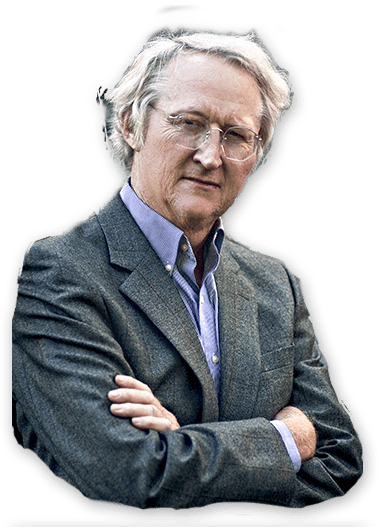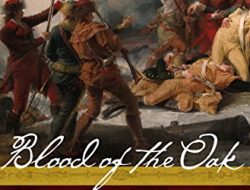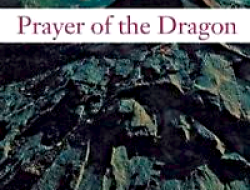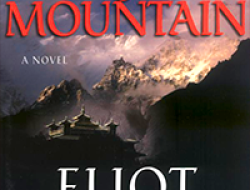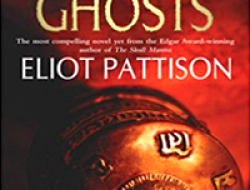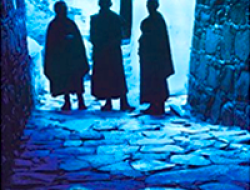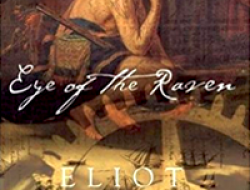ABOUT THE BOOK

Publisher: Counterpoint (December 28, 2007)
Aboard a British convict ship bound for the new world, exiled clan chief Duncan McCallum witnesses a bizarre series of murders and suicides among his fellow Highland scot prisoners. Compelled by the masters of his prison company to resolve the crimes while remaining a prisoner, Duncan soon makes a fearful discovery.
AUTHOR’S NOTE
During the late 1750’s a peculiar complaint began arising from officers in the British forts north of Albany in the New York colony. They questioned the practice of allowing Iroquois allies to bivouac near their combat garrisons due to the unruly behavior that resulted when the Indians mingled with the Highland Scot troops-who seemed, by army standards, little more than heathens themselves. The bonds between Scot and Iroquois that anchor the plot of this novel are indeed not a novelist’s fancy but rooted in historic fact: for a few years in the mid-18th century these two extraordinary cultures briefly and sporadically overlapped. In retrospect the connection should come as no surprise to anyone who has studied the two peoples. The Highlanders and Iroquois were both steeped in warrior traditions, shared a rich heritage of storytelling, chafed against authority, and were each in their own way deeply spiritual. A particular headache for British officers-and a particular delight for those of us with Scottish blood gazing back — was the tendency of certain Highlanders and Iroquois to perform war dances together before engagements.
REVIEWS
“Having already won an Edgar for his Inspector Shan series (The Skull Mantra, etc.), Pattison makes a strong bid for another with this outstanding mystery set in colonial America. Scottish prisoner Duncan McCallum, indentured to the Ramsey Company, is troubled by a series of mysterious deaths on the ship carrying him to the New World. When McCallum’s close friend Adam Munroe and a professor who was to work as a tutor are added to the list of the dead, McCallum, who has extensive medical training, is enlisted by the captain to investigate. The shipboard mysteries remain unresolved when they arrive in New York, and McCallum’s quest for the truth leads him to perilous encounters on both sides of the French and Indian War. Pattison’s moving characters, intricate plot and masterful evocation of the time, including sensitive depictions of the effects of the European war on Native Americans, set this leagues beyond most historicals and augur well for future entries in this series.” —Publishers Weekly
“It’s the mid-18th century, and young Highland Scot Duncan McCallum is on a convict ship bound for the New World. Most of his family has been slaughtered, and he’s having a hard time with the yoke of British oppression himself. He witnesses a series of murders and suicides among his fellow passengers, and goes diving into the Atlantic to save another. When he reaches New York he finds the French and Indian War in full swing, and his troubles really begin.
Once indentured to empire builder Lord Ramsey as a tutor to his children and connected to his utopian community in the Hudson Valley, Duncan scrambles to understand both his new setting and the continuing series of murders that follow in his wake. The conflicts among armies both private and government-backed, allies and enemies among the Huron, the French and members of the Iroquois Confederacy, and the knowledge that his soldier brother has become a renegade, make a mix to try his soul.
A string of dead people haunts the story, at times seeming more alive than the survivors. Also hauntingly beautiful are the bonds between the cultures of the Scots Highlanders and the Indians, both “true skin” peoples. Dark, complex and compelling in mystery, historical, and spiritual considerations, the reader wonders along with Duncan whether the New World will see oppression extended or explode in a new burst of freedom.” –Eileen Charbonneau, Historical Novels Review
“The Last of the Mohicans meets Braveheart, with a curious dash of CSI” — Entertainment Weekly
DISCUSSION GUIDE
When he is called upon to investigate a grisly murder on board his prison ship Duncan McCallum assumes it is but a way for his English masters to complete the destruction of his Highland clan started years earlier. Forced to renounce all things Scottish since he was a boy, unfairly condemned to hard labor in America, Duncan is about to leap into the sea when an old Scot persuades him that Duncan is now the chief of his near-extinct clan, duty bound to survive and protect the Scottish prisoners from the bizarre events which have brought murder and suicide to their ranks. The hope that rises as Duncan begins to decipher those mysteries is soon overshadowed by a fearful discovery: the violence on board is somehow linked to the savages of the American wilderness. Though he has never before set foot in the New World, he is attacked by an Indian upon landing in New York, yet another Indian dies urgently trying to get a message to him. Accosted by an army officer, followed by an American ranger, shamed when the fragile daughter of the prison company’s patron is kidnapped by the Iroquois, he begins to realize that he and the company are meant to somehow be sacrificed in the bloody war with the French and Indians-and the only solution is for Duncan to escape into the terrifying wilderness to follow a strange path of clues that seem half Highland Scot and half Iroquois. Duncan’s journey through the wilderness, crossing the paths of settlers, German missionaries, and Indian sorcerers, leads him to a rough and painful justice which transforms him and his friends forever. With the epic struggles of the 18th century as its backdrop, Bone Rattler is not simply a tale about a hardwon triumph of justice but also one about the triumph of the human spirit.
For Discussion
1. How do the Bone Rattler plotlines and characters build upon similarities between the Scottish and Iroquois cultures?
2. How does the woodland Indian culture presented in the novel affect the political dynamic underlying the plot of Bone Rattler?
3. Pattison has often noted that his books ultimately are about the nature of justice, which can mean different things to different people. Does Bone Rattler suggest that there is a “natural” form of justice that exists without laws and courts? Does the justice sought by the Scots differ from that sought by the Indians?
4. Most history books present 18th century America in terms of aristocrats and wealthy planters. Why does Pattison present this period through the eyes of exiles and outcasts? How might this relate to his statement that in Bone Rattler he seeks to bring to life the invisible people who really formed America?
5. In the second chapter, speaking of Duncan’s duty to his lost Scottish clan, Lister states “There’s the rub. Ye’ll never have their world. But ye’ll always have their name.” How does this become a theme in the novel? In early America?
6. “The darkness there is like nothing I’ve ever seen,” Lister warns of the western forest across the river from Edentown. “Worse than the blackest sea in the blackest storm. Ye can read the sea, but ye can’t read that. There is no bottom to it, there is just black behind the black…There is no soul alive who’s been from one side to the other…Go into it and the clan dies.” How does Pattison use the American wilderness as another character in his novel?
7. In what ways might Sarah Ramsey be considered representative of an emerging “American” woman?
8. “When all the land’s gone there will be only things in your world,” the Iroquois shaman declares to Lord Ramsey as he tries to understand the English. “Will those things have life?” How do differing views of the earth and wilderness drive the English and the Indians in this novel?
9. The parallels between the plight of the Highland Scots and the plight of the American Indians resonate deeply with Duncan by the end of the novel. What parallels do you see beyond their unfair treatment by the British king?
10. What do you think Pattison means in his closing note that sometimes historical fiction can strike closer to the truth than history books?

